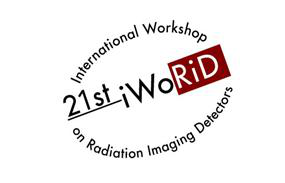Speaker
Description
In this study, an organic polymer-based photodetector with a conjugated polymer PBDB-T1) and a non-fullerene ITIC2) was investigated to improve the sensitivity and frequency response for the indirect X-ray detection. The PBDB-T has more alkyl-chains and quinoids, so it can show better carrier transport than P3HT3) (commonly used donor). The chosen ITIC instead of PC70BM4) (commonly used acceptor) has the advantage of low voltage loss because its HOMO and LUMO levels are well balanced with those levels of PBDB-T (Fig. 1a). The absorption spectra (Fig. 1b) of the PBDB-T:ITIC thin films showed higher absorbance than the P3HT:PC70BM film. Since the PBDB-T:ITIC absorption spectra tended to shift to the red visible region, two different scintillators, such as the CsI(Tl) with emission peak at 550 nm and the ZnSe(Te) with emission peak at 640 nm, were coupled with the photodetectors for measuring radiation parameters. The detector with the PBDB-T:ITIC = 1:1 blended film and ZnSe(Te) scintillator showed the highest sensitivity of 1.91 mA/Gy*cm2 (Fig. 1c). This is 205% increase of sensitivity over that of the common P3HT:PC70BM detector with the CsI(Tl) scintillator. In order to measure the frequency response, pulsed-light from a green LED with frequencies from 1 Hz to 100 kHz was applied to the photodetectors. The detector with the PBDB-T:ITIC = 1:1 film showed the cut-off frequency of 31.5 kHz, which was higher than that of the P3HT:PC70BM = 1:1 detector




